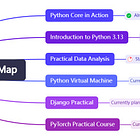Data Visualization: Mastering the Swiss Army Knife Skill of the Data World(Practical Data Analysis 9)
Master data visualization with tools like Tableau, Power BI, and Python libraries. Learn key skills to create compelling visual insights for analysis and business.
Welcome to the "Practical Data Analysis" Series
In the previous session, I introduced data transformation. Today, let's talk about data visualization.
If you aim to become a data analyst, mastering visualization skills is essential because, in most cases, your boss is more concerned about the presented results.
Additionally, when these visualization results are displayed before your eyes, you can intuitively appreciate the "beauty of data." Images far surpass text in terms of expression. They not only reflect the authenticity of the data but also spark a lot of imagination.
What types of data visualization views are there?
After understanding the importance of data visualization, let’s explore the types of views commonly included in data visualization products. There are over 20 types of visualization views we frequently use, such as text tables, heatmaps, maps, symbol maps, pie charts, horizontal bars, stacked bars, side-by-side bars, tree maps, circle views, side-by-side circles, lines, dual lines, area charts, dual combos, scatter plots, histograms, box plots, Gantt charts, bullseye charts, bubble charts, and more.
You don't need to memorize all these view names, as most visualization tools offer these graphs directly on the operation panel.
You just need to glance at them to know if they are what you need.
Of course, you must not only know how to use these views but also understand the purpose behind using them. Here, I’ve summarized nine situations:
In these scenarios, you might want to see a data distribution, its trends over time, or the relationship between parts and the whole.
Before designing, you need to think about who your audience is, what you want to present to them, what data features need highlighting, and which view to use for the presentation.
For example, if you want to show the distribution of a certain variable, you can use a histogram. If you want to examine the correlation and distribution between two variables, a scatter plot works well.
A single view can serve multiple purposes. For instance, a scatter plot can represent both the relationship between two variables and their distribution.
Similarly, if you want to view the distribution of variables, you could use either a scatter plot or a histogram.
Thus, the specific view you choose depends on the purpose of your data visualization.







